Scheme of the pad wear indicator
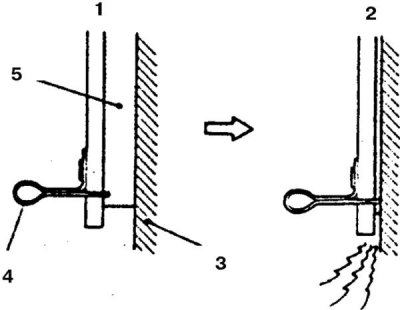
1. New block; 2. Worn out; 3. Disk; 4. indicator; 5. Block
Most vehicles have a brake pad wear indicator. If a characteristic squeal is heard when using the brakes, then check the wear of the pads. If the indicator is in contact with the brake disc, the pads should be replaced.
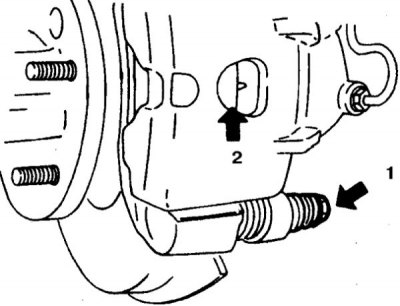
Residual pad thickness can be checked through a window in the caliper (1 - caliper finger, 2 - window).
For a more detailed look (uniform wear along the plane and check the condition) pads must be removed. Maximum residual pad thickness 1 mm (1983-86) and 2 mm (since 1987).
Removal and installation
1. Raise the front of the car and remove the wheel.
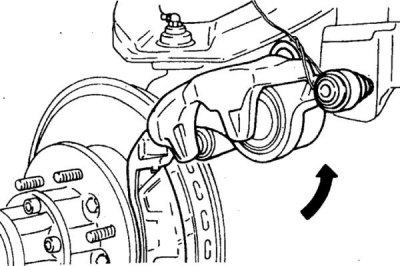
2. Turn away the bottom finger, throw away a support and fix. Do not allow the protective grease of the caliper pin to be removed or get dirt on it.
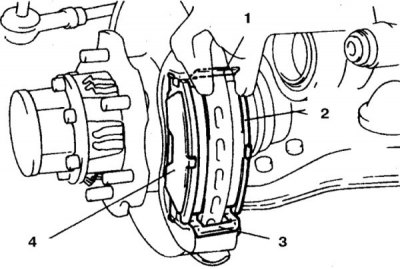
3. Remove the pads, plates and brackets, note the location of these parts (1 - bracket, 2 - inner plate, 3 - outer plate).
Installation
Proper orientation of anti-noise plates and pads during assembly
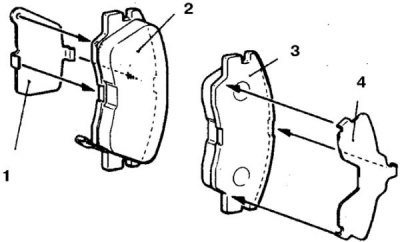
1. Inner plate; 2. Inner shoe; 3. Outer block; 4. Outer plate
1. Dip the piston into the caliper cylinder with a clamp, watching the fluid level in the tank (when installing new pads, the piston should be retracted a considerable distance).
2. Install the plates and brackets in the same order.
3. Install the pads on the caliper. If top and bottom brackets are provided, they should be replaced along with the pads.
4. Install the caliper, wheel and lower the car.
5. Step on the pedal several times to press the pads against the disc. Check fluid level, top up if necessary.
6. Start the engine and press the brake pedal several times again, check the pedal stiffness. During the first 15 km run with new pads, avoid sudden braking.
